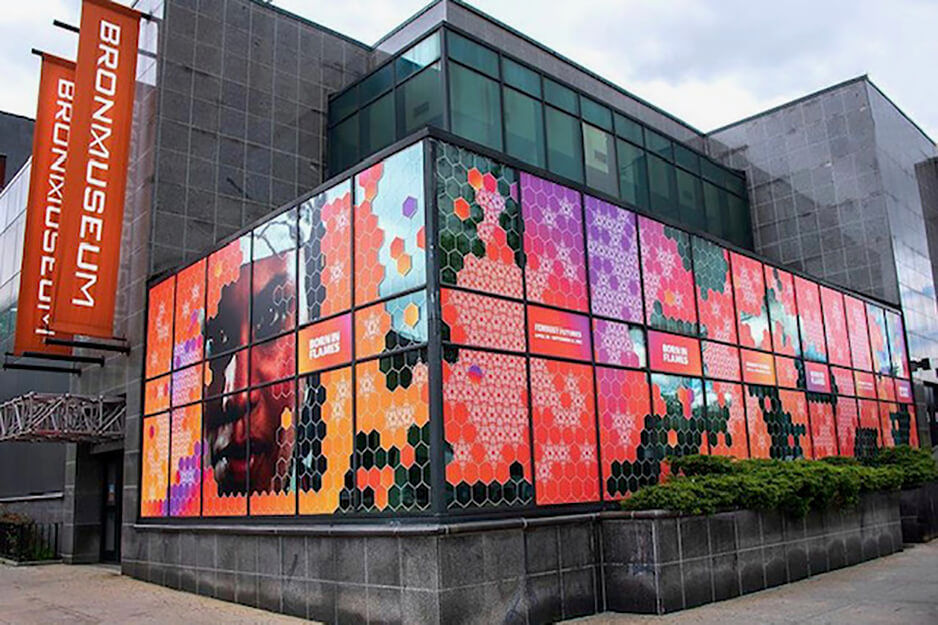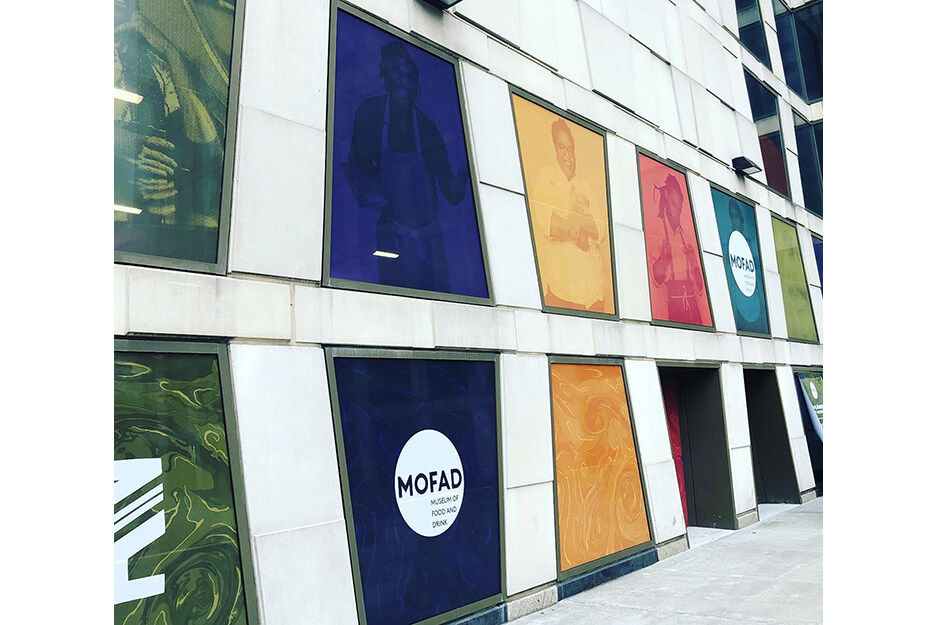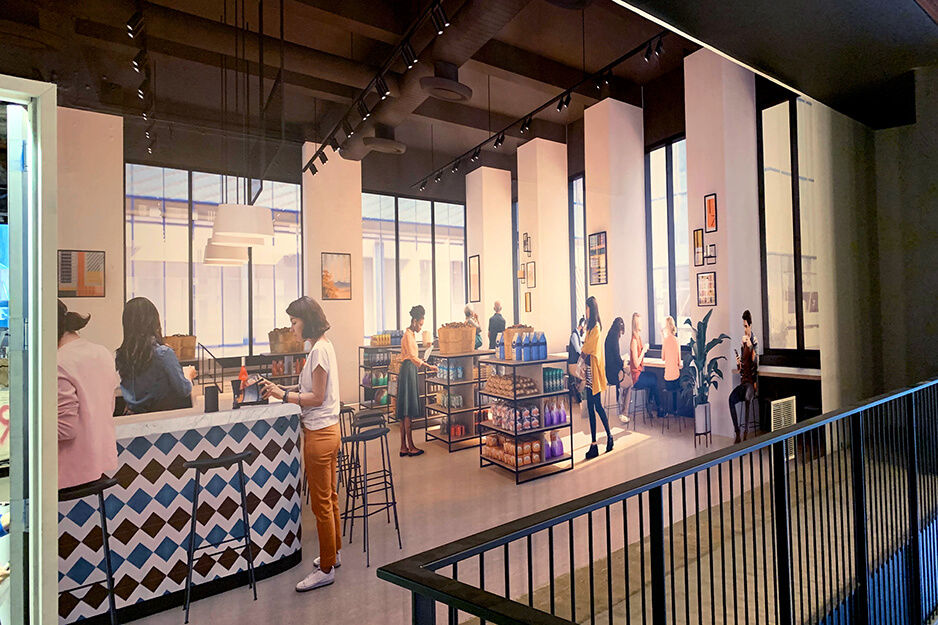Exhibiting Quality
Full Point Graphics | Brooklyn, New York
As an artist, Hiroshi Kumagai had always appreciated the plight of museum and cultural organizations: They need extremely high-quality graphics work which can be both hard to find and, often, quite expensive. When Hiroshi opened his new signage company, Full Point Graphics in Brooklyn, New York, in 2011, he focused on serving this exacting market.
We talked with Hiroshi about his journey to opening his own shop, how the museum market is different from the other markets he serves, and how his company and clients are coping with the effects of the pandemic.
How did you transition from artist to sign shop owner?
Hiroshi Kumagai: For many years, I was using vinyl media in my art. A friend of mine who used to have a sign business told me about vinyl cutting equipment, and I decided to invest in a cutter for my own artwork. Once I had the equipment, I began thinking about other ways to use it.
“The color quality of the VG2 was a major consideration for us.”
As an artist, I understood that many museums and cultural organizations have issues finding good print vendors, because their standards are extremely high and many sign shops are either unable or unwilling to bring their production to that level. In addition, meeting client demands for such high-quality output can be very expensive.
I was working out of my spare bedroom and living room back then, which helped me to keep costs down. Since I was already familiar with the standards museums and cultural institutions set for their graphics work, I decided to open a business that catered to these specific types of clientele.
Of course, we do retail, restaurant, and other types of signage as well, but our “bread and butter” is museum graphics exhibition planning - that’s what we are known for.
How did you choose your printing equipment?
Our first printer was an entry-level inkjet that was good at first, but that machine ended up having a lot of mechanical problems. With two payments left, it finally stopped working altogether. I decided that was enough.
I needed a reliable wide-format printer with great print quality. After researching printers extensively and talking with our local dealer, I purchased a Roland DG TrueVIS VG2-540.
The color quality of the VG2 was a major consideration for us. In addition, the expanded color gamut of new TR2 inks has made color matching much easier and more accurate.
Since many of our jobs are due the next day or overnight, the VG2’s print speed is extremely important.
I also appreciate the VG2’s ease of use and reliability. The integrated cutting capability is a great advantage as well, since we don’t have to interrupt the plotter’s workflow. In short, the VG2 has all the features I need.
Please tell us about your shop.
It’s extremely small! This is New York City, and the rent is super high. Our shop is currently just over 1000 square feet with two main crew. We had to downsize to 450 square feet when the pandemic started. Fortunately, we got slightly busier back in August and got to expand the space again.
The TrueVIS VG2 is our main printer. We also have one backup 44” printer, two plotters, 30” and 54”, one cold laminator and one heat-assisted laminator. Pretty humble but we can do a lot with this basic set-up.
We share a floor in a massive industrial building with other artists. Some are like us – small business owners – while others are professional artists, designers and photographers.
It is the perfect setup for us. When we have a big job, we can rent additional space for a month or two. We have an outdoor area to do messy work, and a spray booth. We even have a gallery space in the building.
Of course, I dream of having a larger shop, but I need to keep my overhead low and quality high. It’s easy to get a loan, invest and expand if I want to, but it’s so difficult to maintain the quality. Our clients spend months, sometimes years, working on their projects. Our job is to realize their vision at the very end of it. We need to pay as much or even more attention and respect to the production and installation of their projects as they do designing them.
Who are some of your clients?
We are fortunate to work with the Metropolitan Museum of Art almost every week. Two of the most recent projects we did there were graphics for “Making the Met: 1870-2020” and “Costume Institute: About Time.” We also worked on the International Center of Photography’s “#ICPConcerned,” “Covid New York” and “George Gergiou” exhibits, as well as the New York Public Library Schomburg Center for Research in Black Culture’s “Traveling While Black: A Century of Pleasure, Pain & Pilgrimmage.”
We really enjoy producing museum graphics. We understand their language and are familiar with those types of environments. It’s also a huge perk to be able to see amazing art and exhibitions in making before the public gets to see them. We often get invited to the opening receptions too!
We also work with a few high-end retail and residential real estate developers, and we have good relationships with many local restaurants. We produce a lot of indoor wall murals, and we’ve handled a lot of floor graphics for social distancing in the past few months. The designers we work with are from top schools in the world. It’s such a pleasure to work with so many talented professionals. Having clients with extremely high standards only makes us a better company.
Please tell us about your work for the Africa Center.
This project ended up being a good test for our new TrueVIS VG2 printer/cutter due to the wide ranges of colors, the size of the project and the quick turnaround needed. For the first stage of the Africa Center project, we produced perforated window graphics for the Center’s more than 30 large (90” x 80”) windows for its collaboration with the Museum of Food and Drinks. The graphics featured African food and culture, and had lots of vibrant colors like oranges, yellows and purples. Our VG2’s wide color gamut and TR2 inks made the prints look amazing and the clients, who had never worked with us before, were extremely impressed with our work.
The second portion of the job was to activate the same large windows with messages supporting the Black Lives Matter movement. For this part of the project, we worked with the Center pro bono – designing, printing and installing the window graphics in only three days. It was extremely challenging due to the high volume and the quick turnaround, but our VG2 handled the project easily and allowed us to print-to-laminate in only a few hours.
How has COVID-19 affected your business? Are you starting to see a return to normal?
I still remember the moment when The Metropolitan Museum of Art announced its temporary closure. Over the next week or so, ALL of my clients closed. Our jobs completely dried up in a matter of days.
I had to downsize my studio and furlough my freelancers. It was not my proudest moment, but we were in survival mode. It an unprecedented situation in our time.
But it also afforded me a chance to think about what we could do for our clients during such a challenging period. As many cultural organizations were suffering without visitors and revenues due to closures, I was determined to give back to the clients who have been loyal to us for many years.
We created social distancing markers at cost for many clients. I am continuing to keep costs down as much as possible for all my clients
I wouldn’t say things are even close to being back to “normal.” We are seeing many jobs coming back, however, and I feel like our business is back to about 60 percent of our pre-COVID-19 level.
What lies ahead for Full Point Graphics? Are there areas of your business you'd like to expand?
We want to grow our business, but investing in new equipment alone won’t ensure our success. Having great equipment is important, but the real key is being able to differentiate our company from larger competitors. We are a boutique studio and we have to do what we do BEST.
Hand-painted, hand-crafted things are making a comeback these days. I would like to do more large-scale, hand-painted wall murals. That would be one way to combine the printing technology we have and skills of the artists we work with.
Our goal is to be a one-of-a-kind studio.




